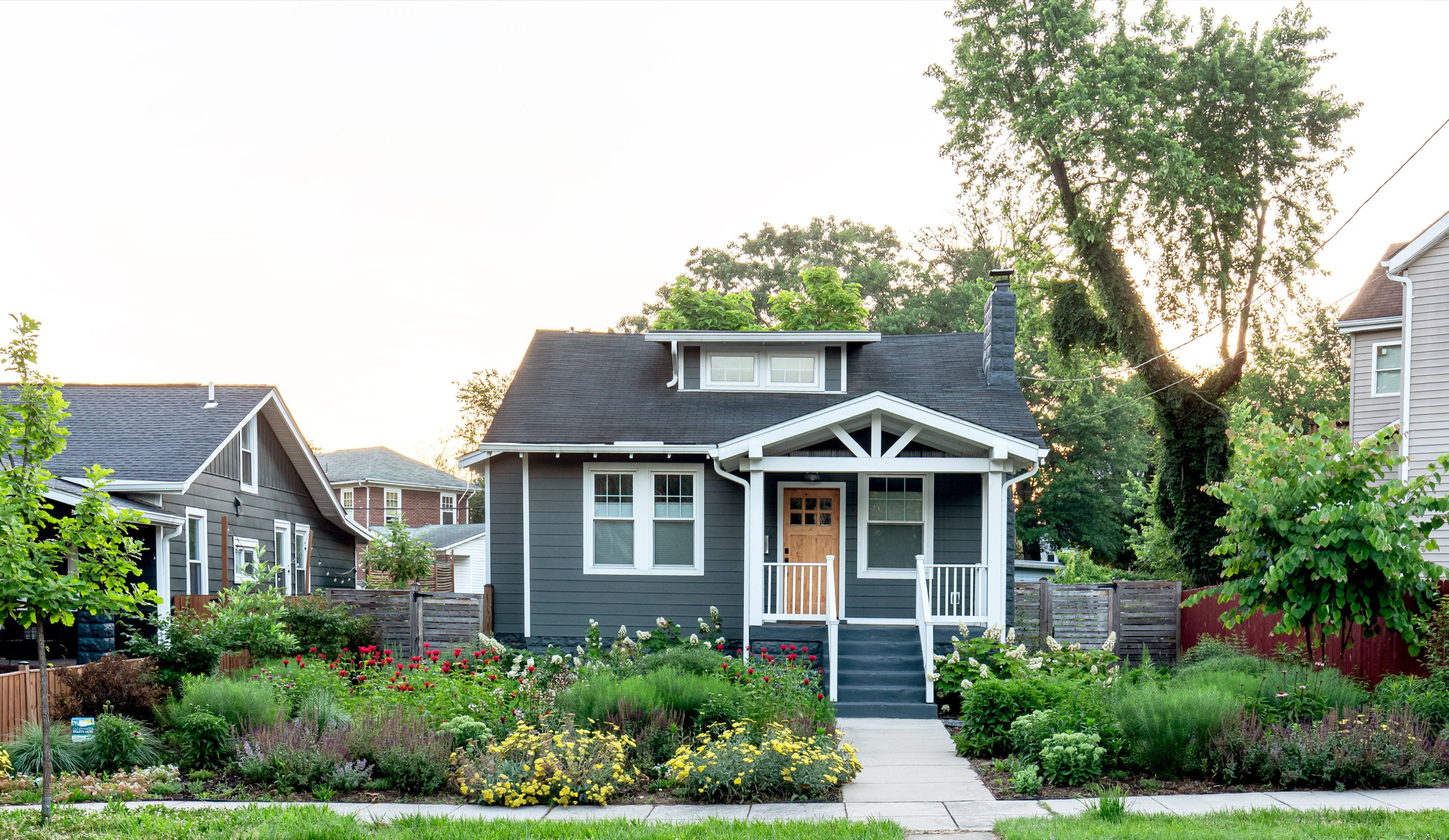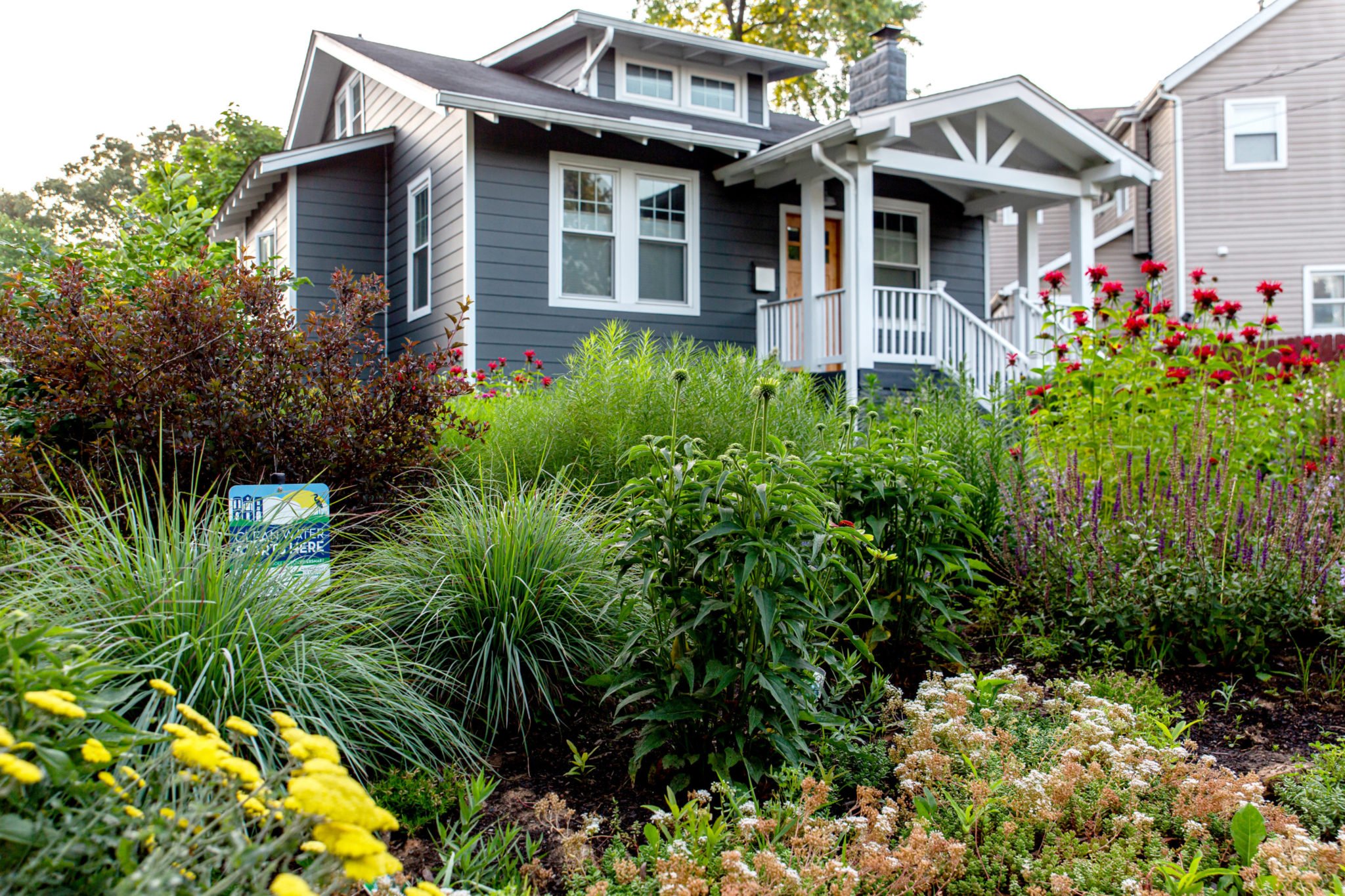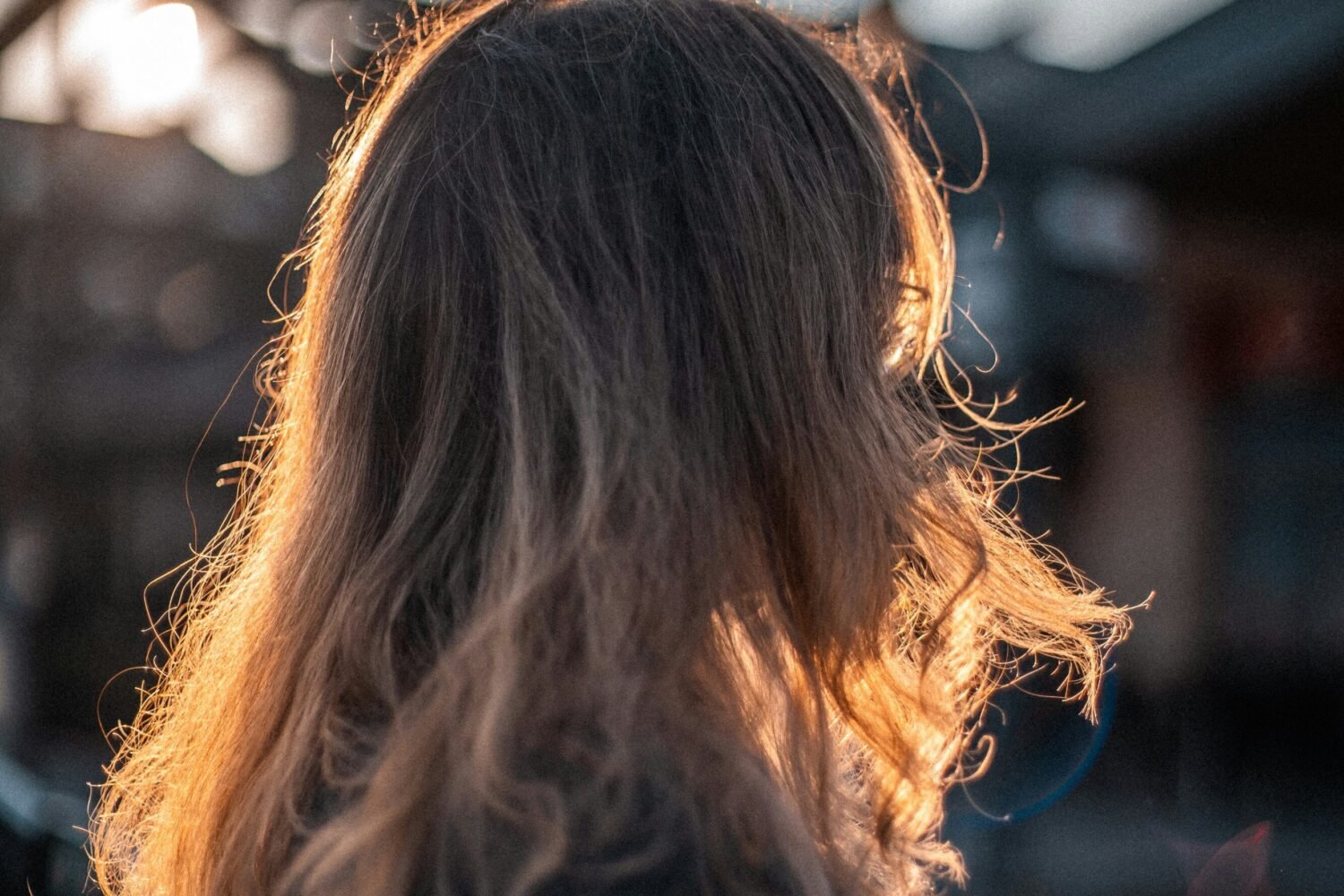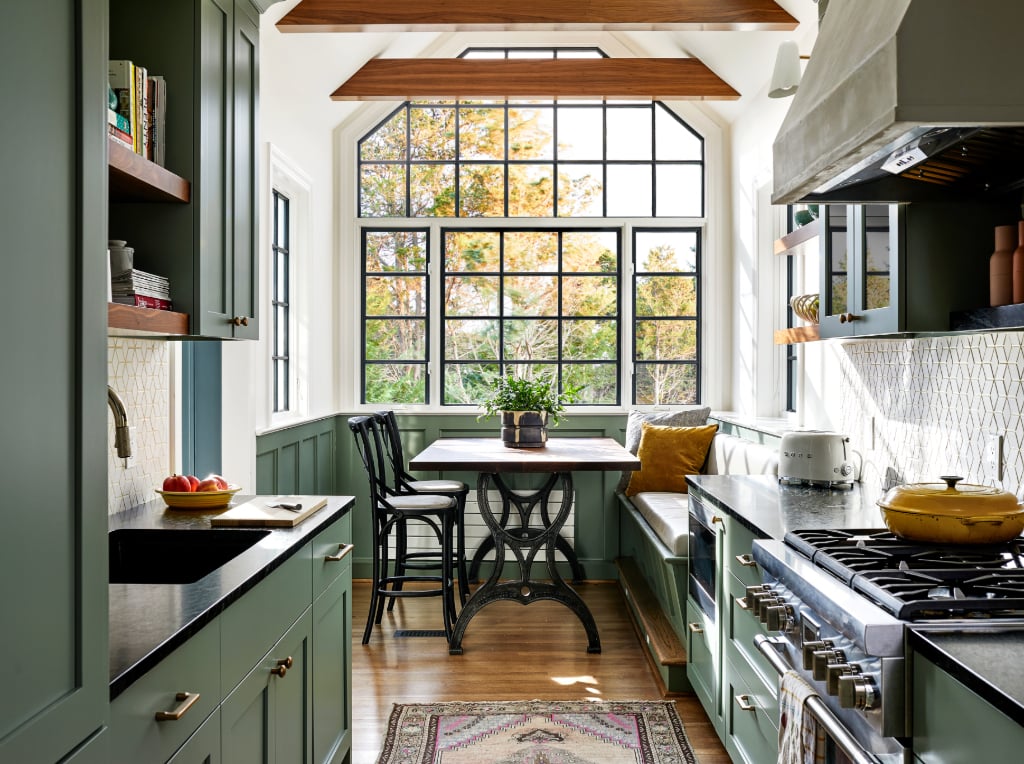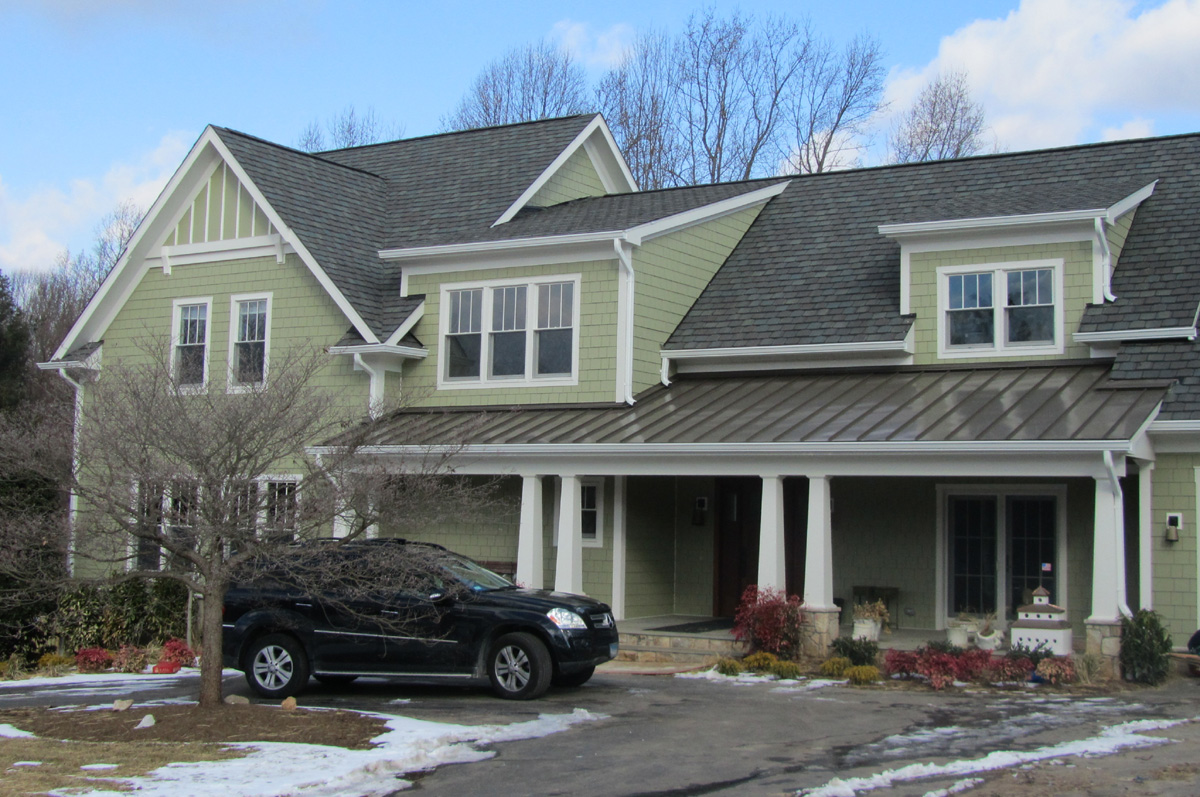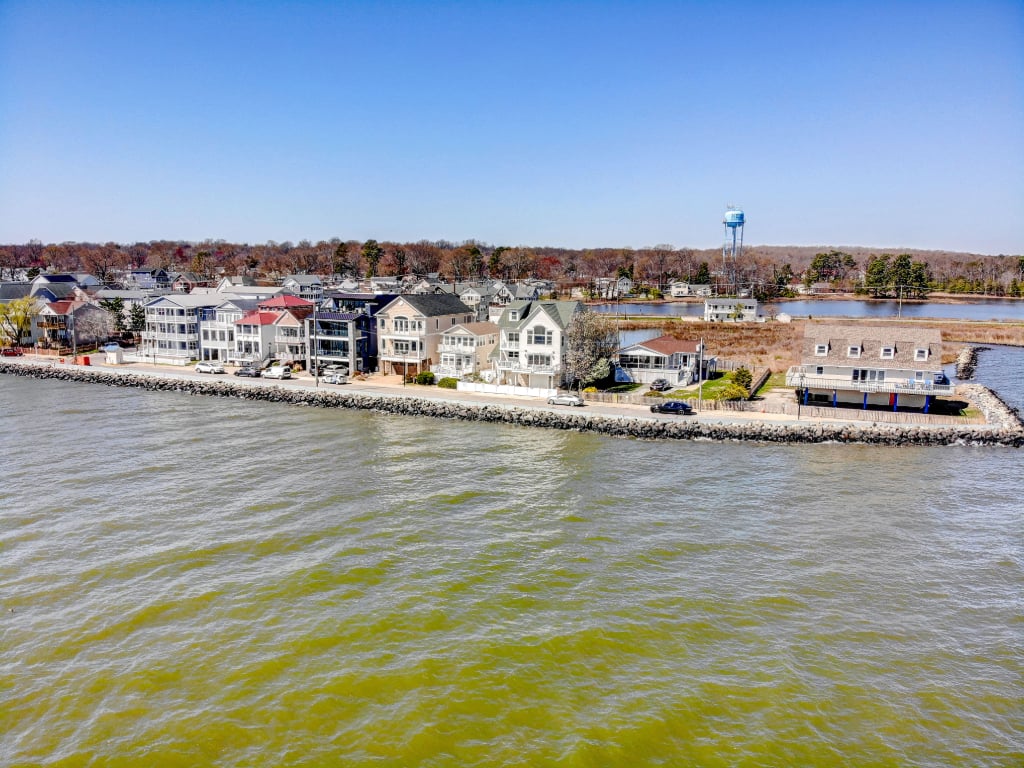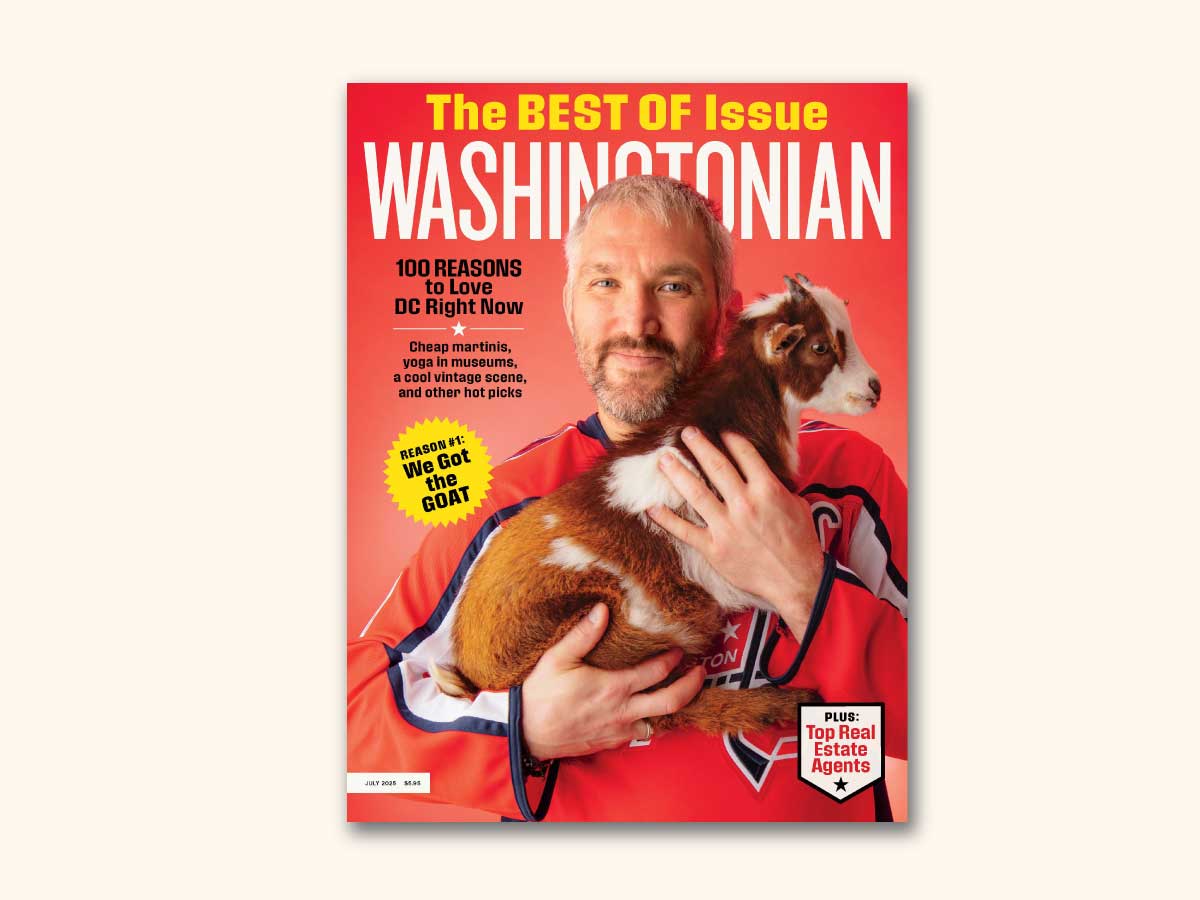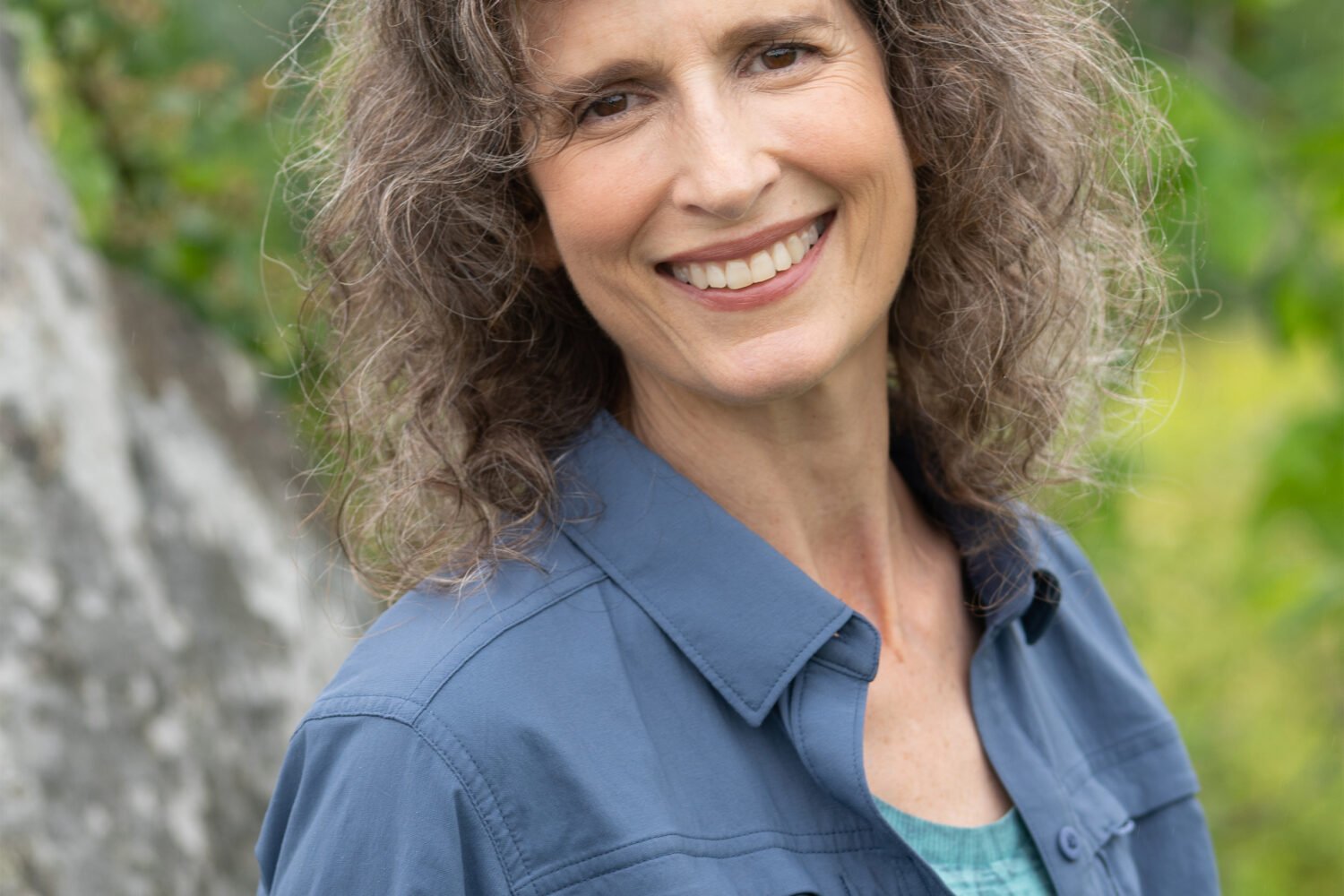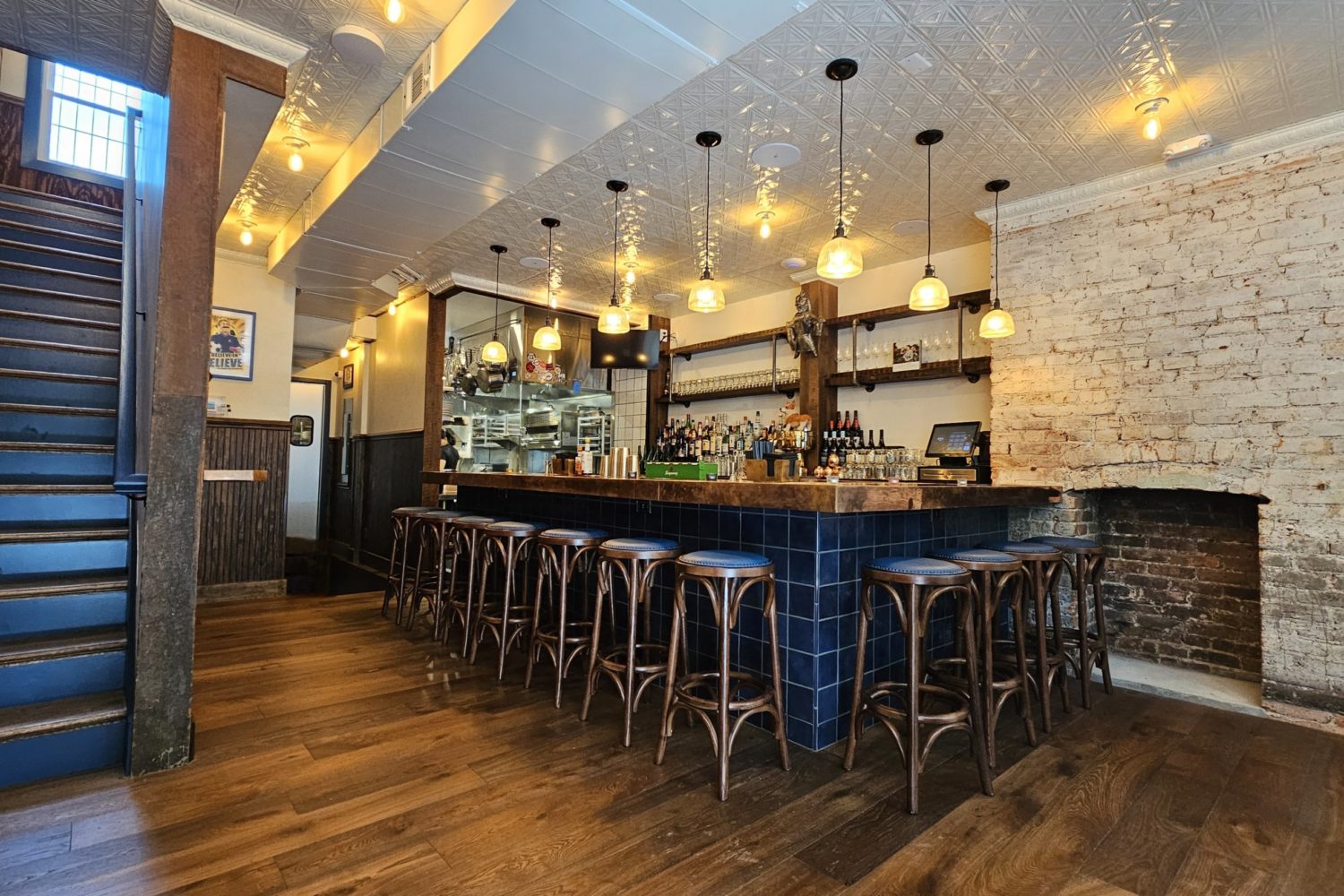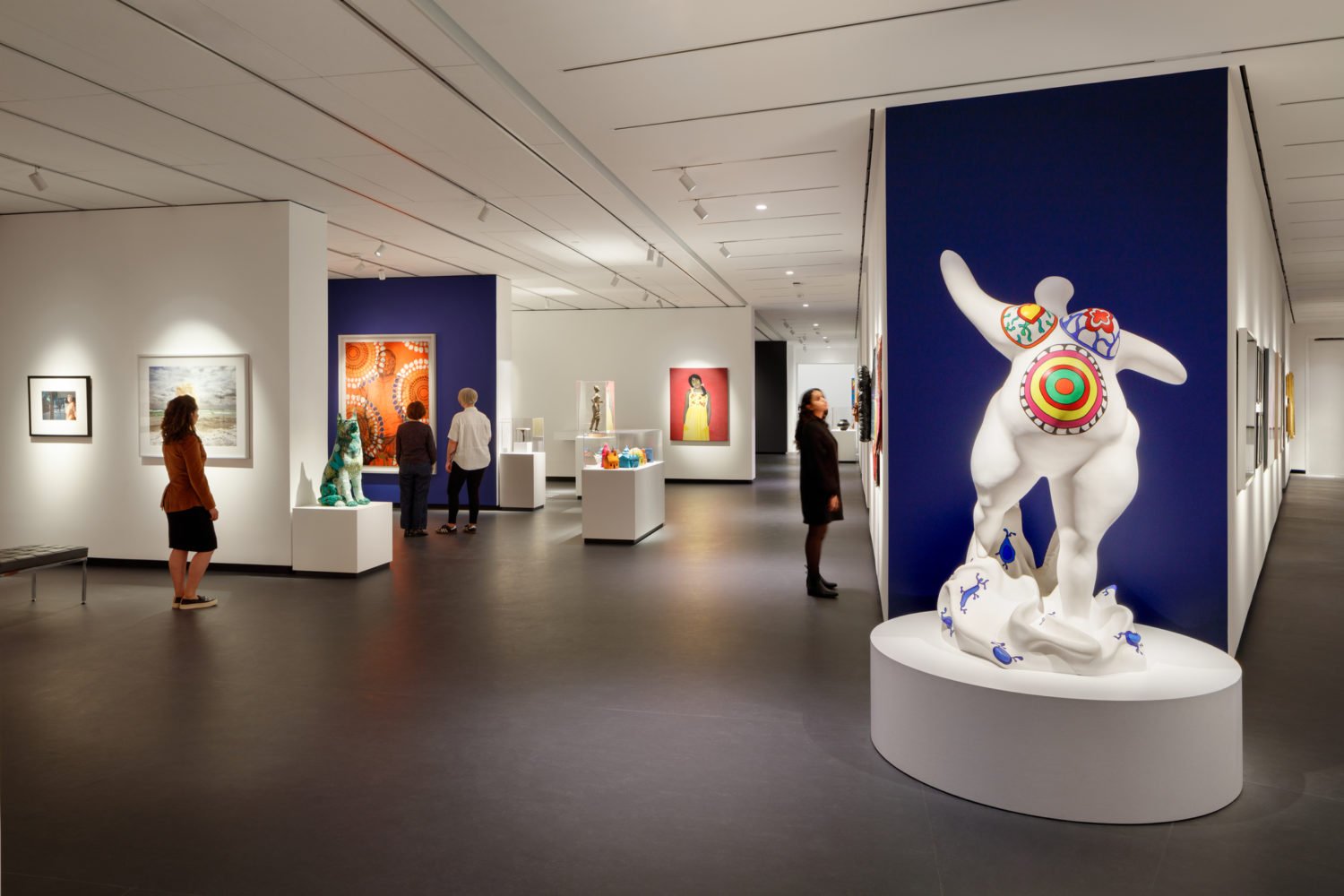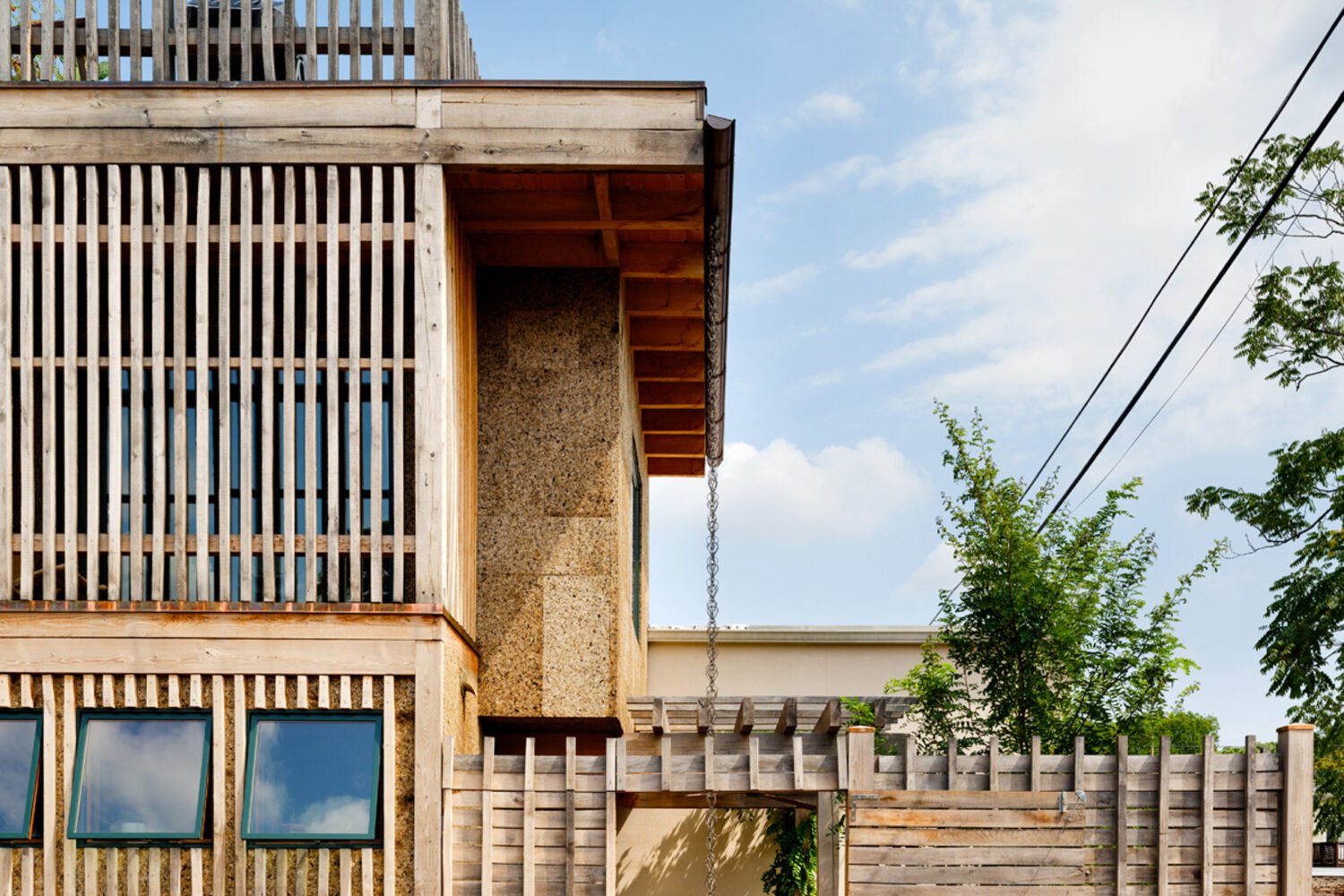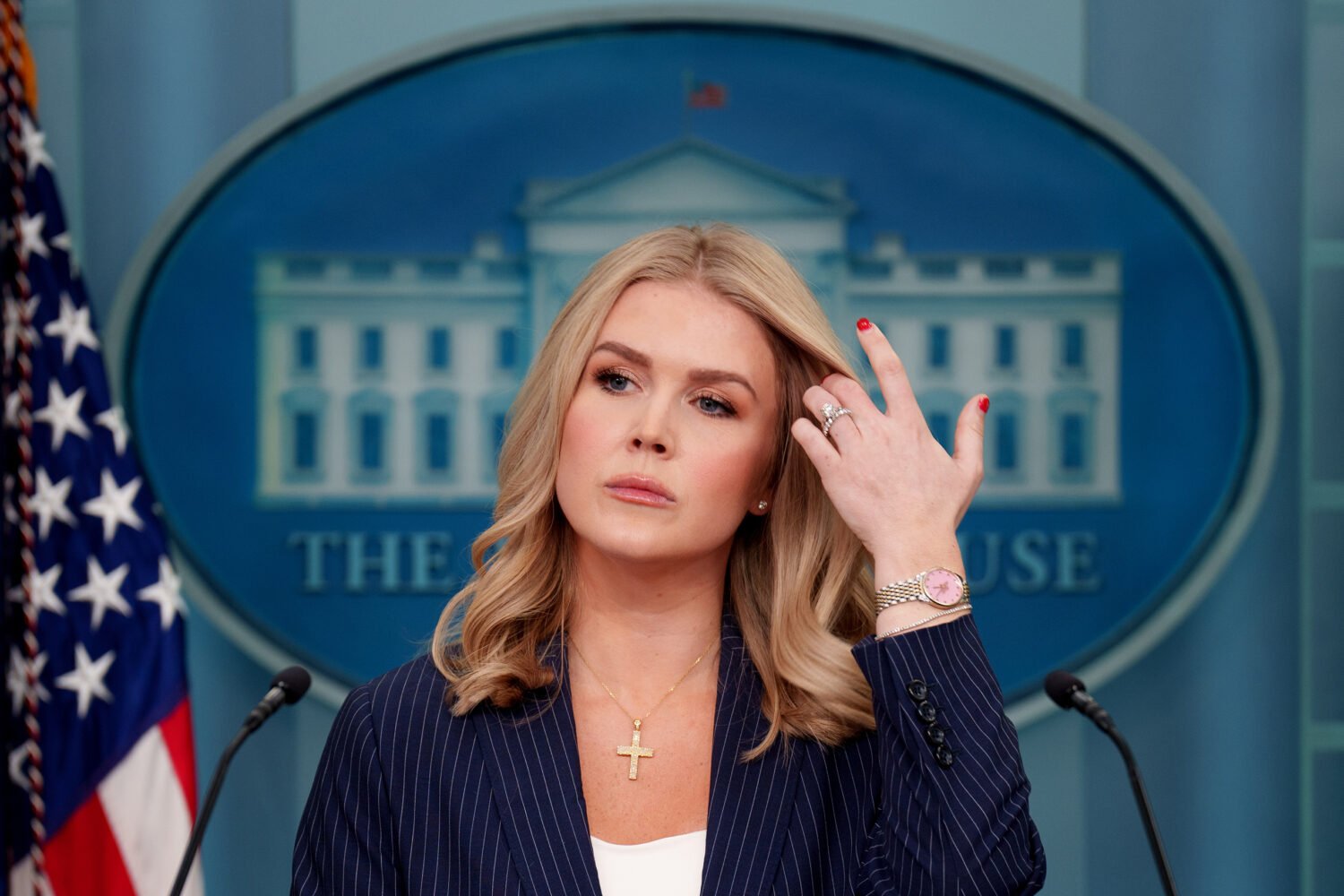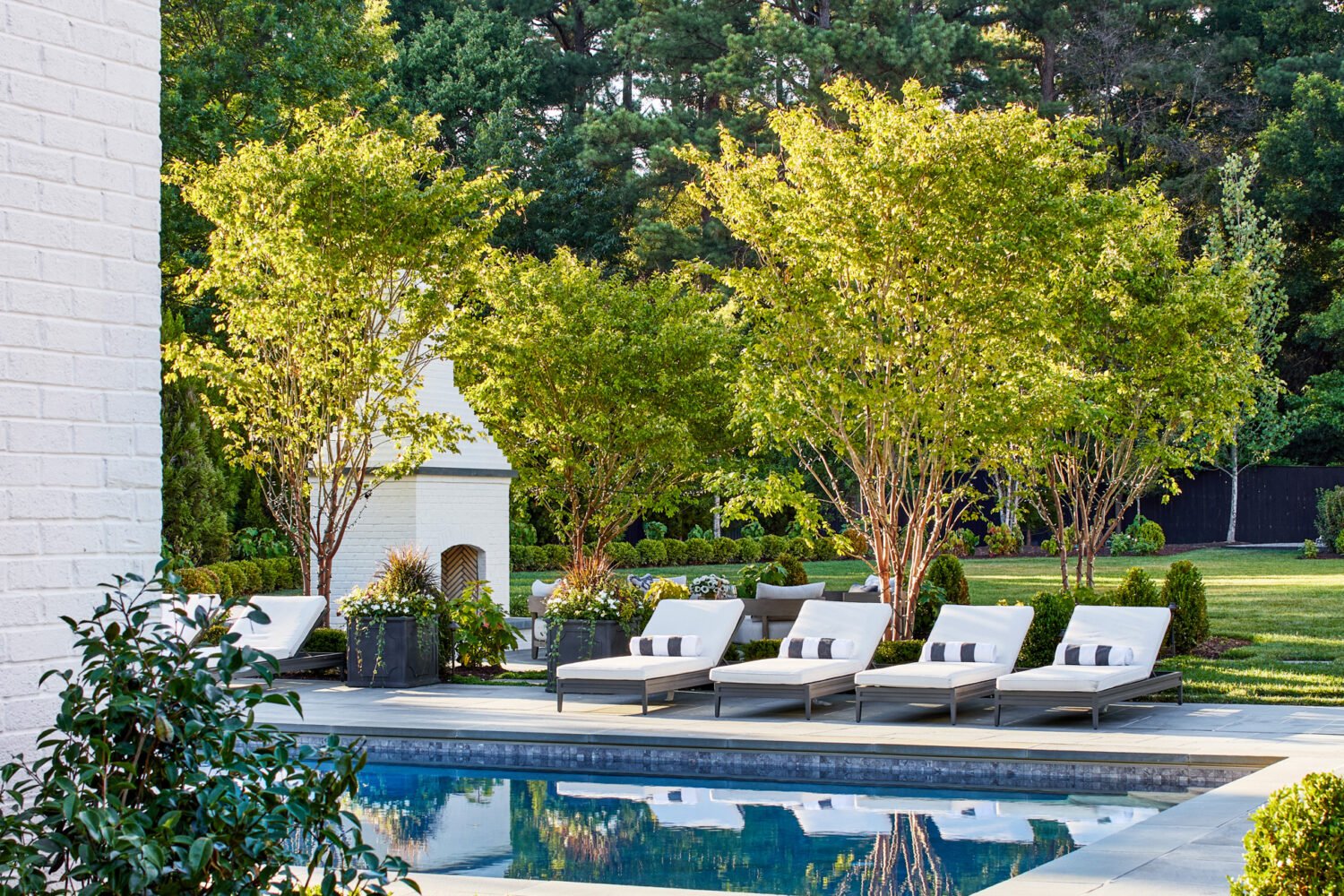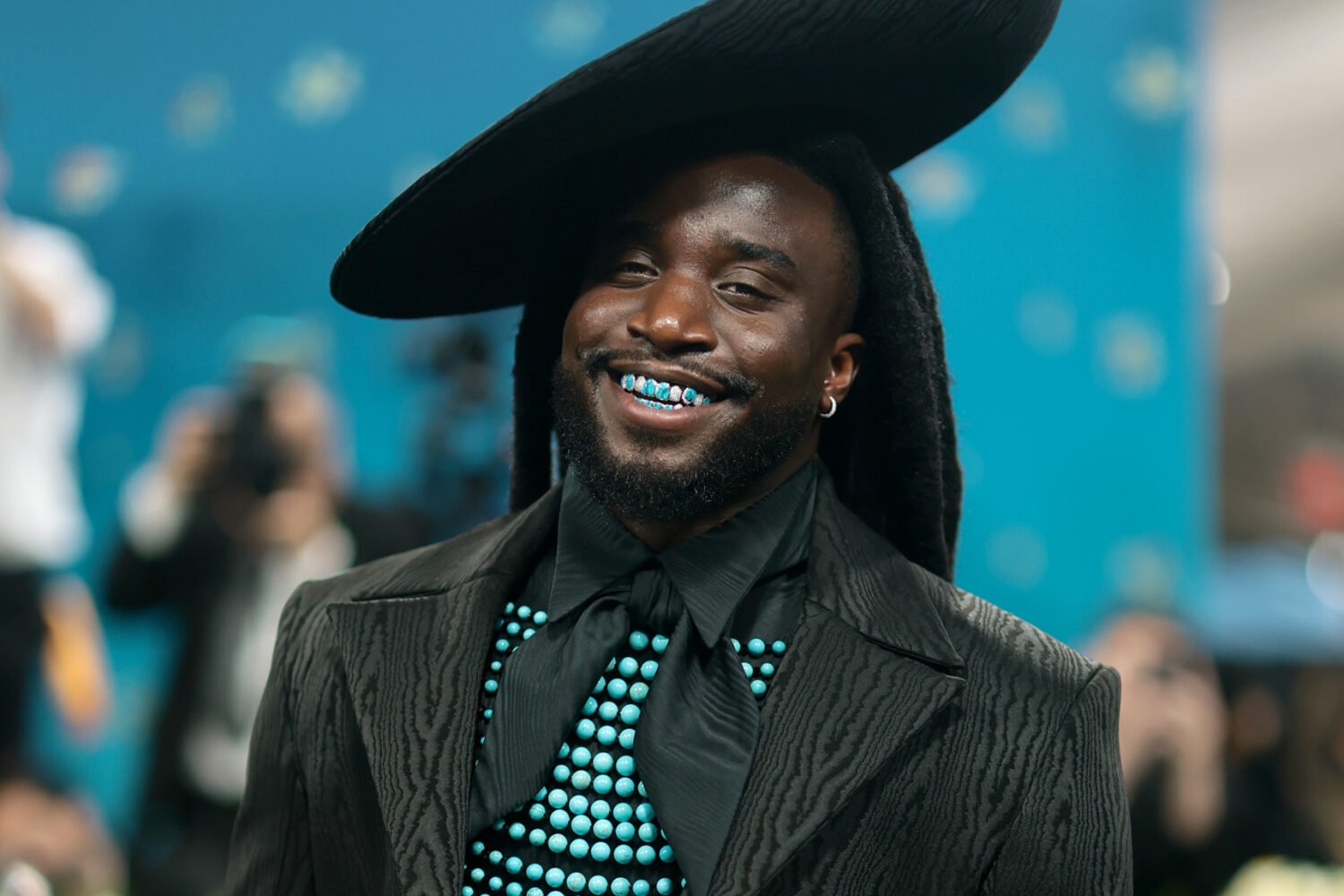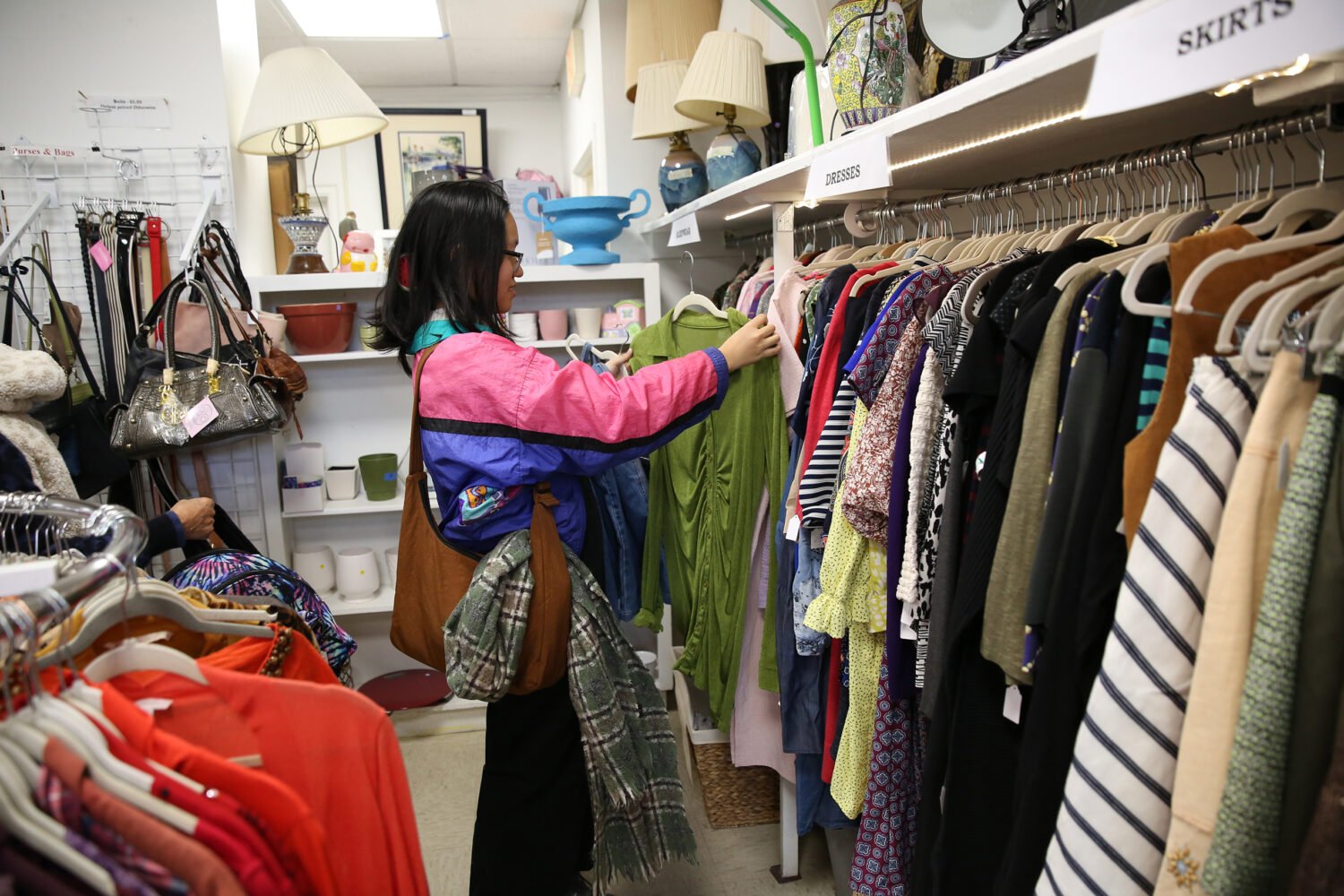Jenny Albertini is usually focused on the inside of a home. As the author of Decluttered, the Marie Kondo-trained organizer spends her days helping people sort through their mess.
But this time around, the clutter in question was outside her house in Northeast DC. When Albertini and her husband Jason Hughes purchased their first house together—a 1920s bungalow—in 2019, its yard was an unruly collection of weeds and invasive plants.
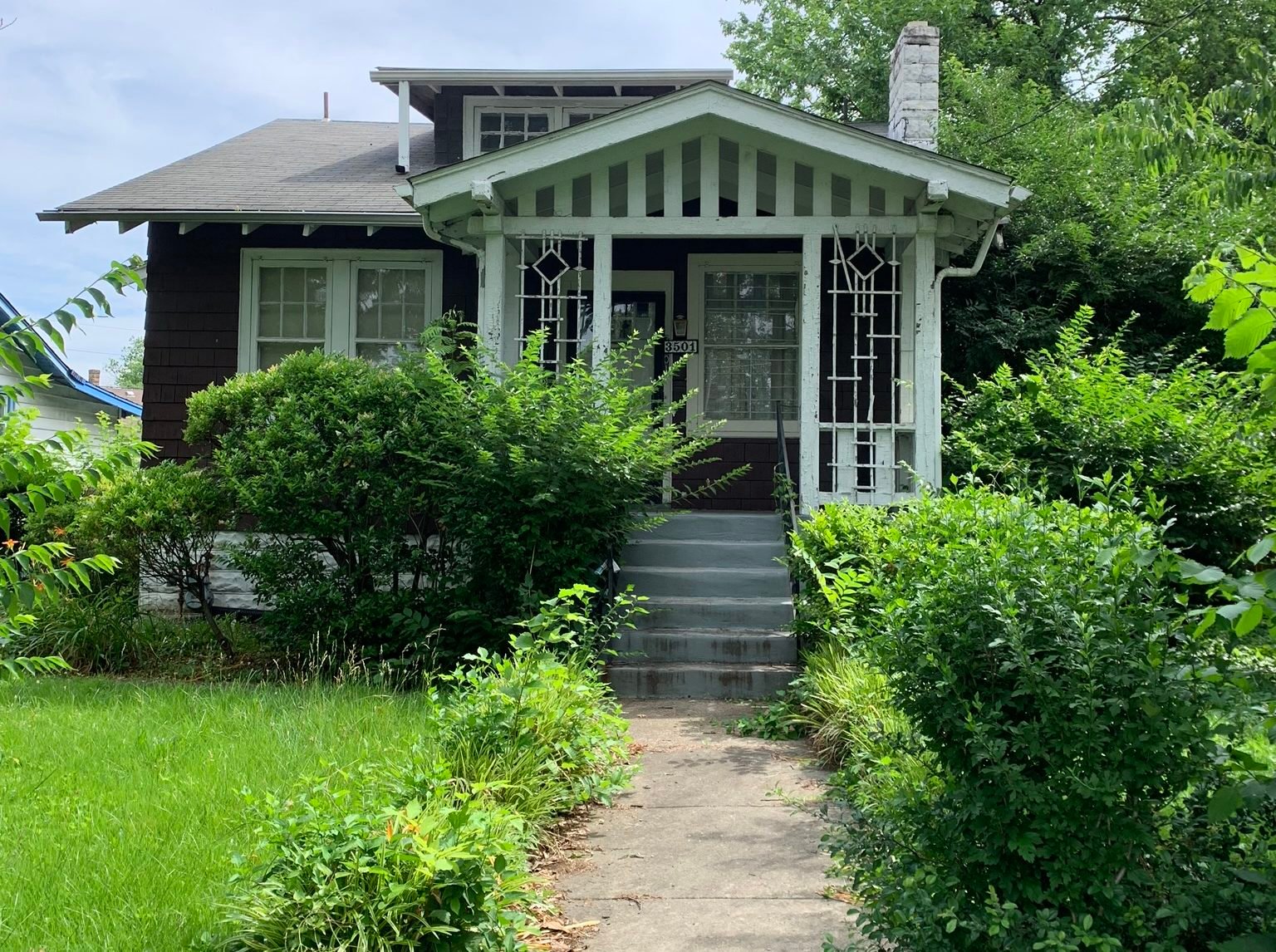
“It hadn’t been touched at all,” says Albertini. “The yard had become incredibly overgrown. We did really basic weeding and mowing to keep it from looking like an absolute jungle, but soon it became clear that what we were trying to do wasn’t making a dent.”
Frustrated, they hired a small landscaping company to give the yard “a really good haircut,” says Albertini, but the massive trim hadn’t fixed all their issues. Beyond the yard, the couple also learned that the ground around the house would need to be re-leveled to stop water that had been flooding into the basement after rain.
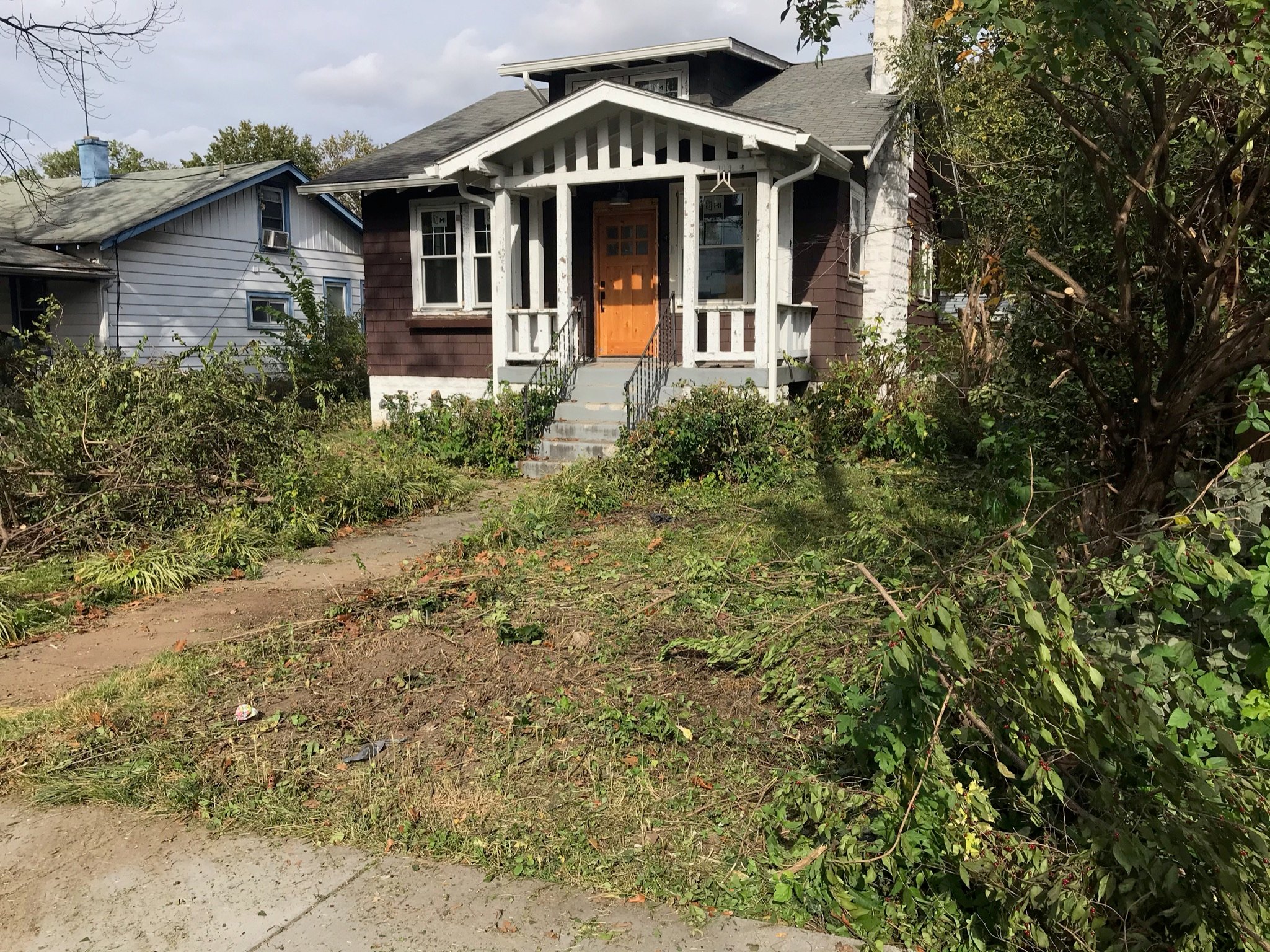
There was one upside to regrading their yard though—it left them with essentially a blank slate to work with, allowing them to be, as Albertini puts it, “intentional with our choices.” They knew one thing was for certain: They didn’t want to fill it all with turf grass.
“Our goal was to create a space that would be environmentally friendly and be in touch with what the native plants are to help to radiate some beauty into the world,” says Albertini.
At this point, it’s been widely reported that the classic, all-American turf lawn doesn’t do much for the environment. Turf grass, much of which is not native to the US, often requires more water, fertilizers, and fuel-powered lawn mowers to maintain. For these reasons, Albertini and Hughes wanted to be among the growing movement of people who are shifting away from traditional lawns and instead opting for wilder, native-filled yards.
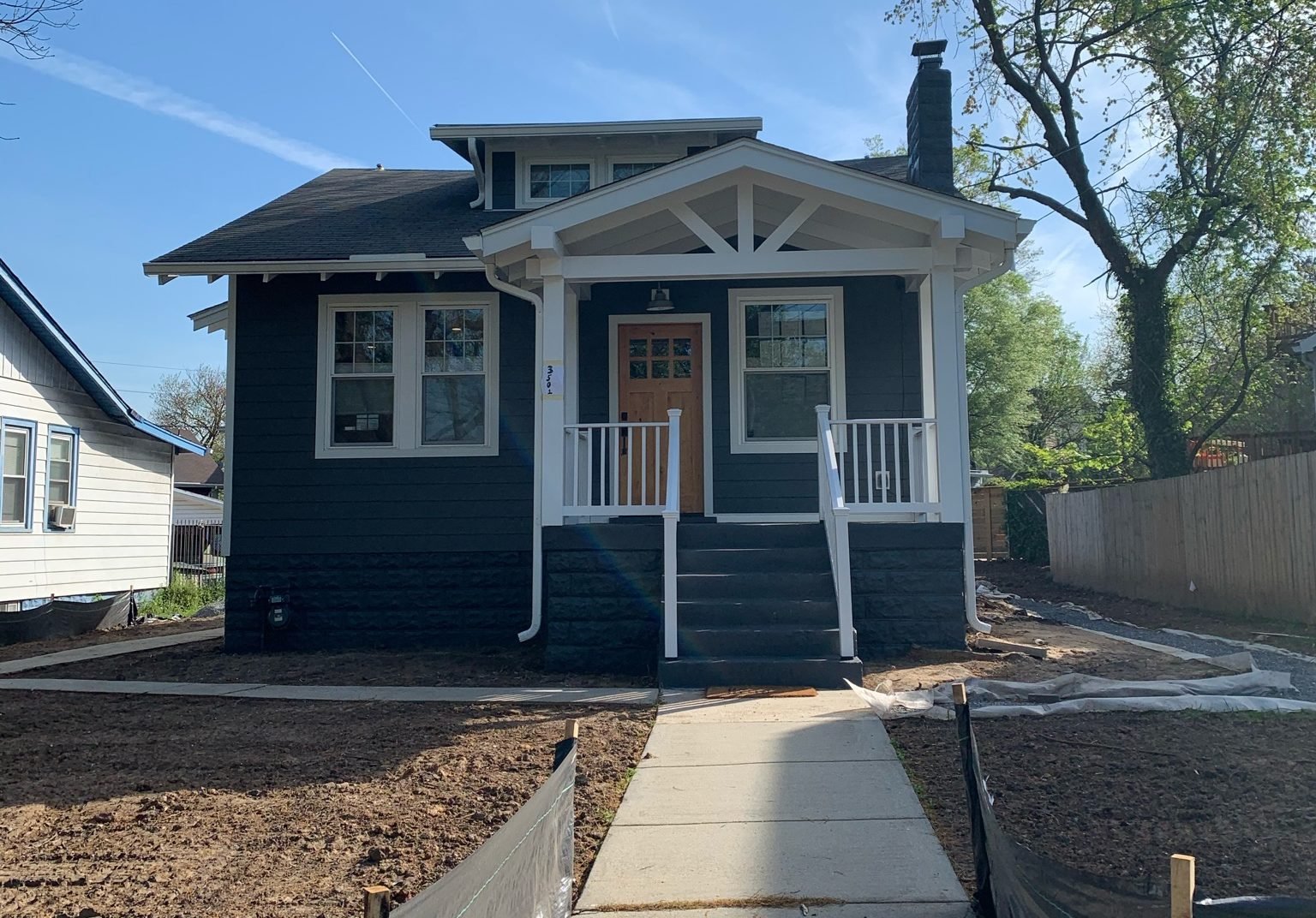
While envisioning what their dream yard might look like, the couple recalled a shared favorite book from childhood. Miss Rumphius by Barbara Cooney tells the story of a woman who wishes to beautify the world by scattering lupine seeds wherever she goes. The illustrated book is filled with images of bountiful wildflowers, something they wished for in their own yard.
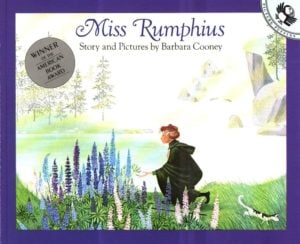
To achieve their ideal space, Albertini and Hughes worked with Mollie Connell, a landscape designer who specializes in native plants. A graduate of Georgetown’s sustainable landscaping program, she helped them design what they call “Miss Rumphius’ Modern Meadow.” In the landscaping plans, the “meadow” (a.k.a the front yard) is described as “a restrained palette of well-behaved native perennials, and grasses are layered to evoke the feeling of a lupine-filled meadow.”
Connell’s plans also included a “woodland path shrub border,” a “lavender and heuchera border,” and a small lawn in the backyard for their English bulldog, Huck.
“That’s the only part that’s grass, and our dog especially enjoys that,” says Albertini.
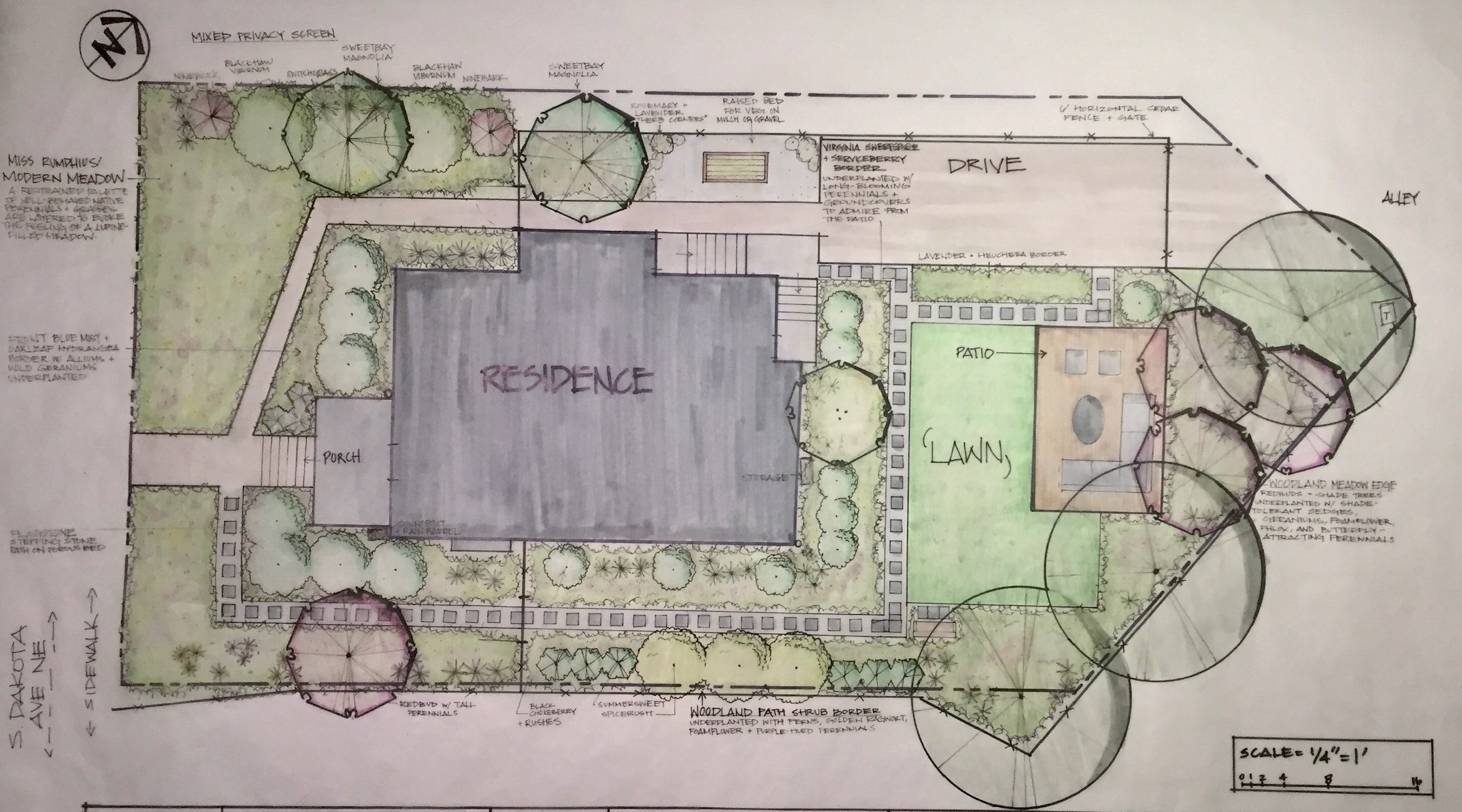
To save money, Connell also introduced the couple to DC’s RiverSmart Homes program, which helps District homeowners install environmentally-friendly yard features—including native gardens, rain barrels, and shade trees—to help reduce stormwater runoff.
The couple qualified for a barrel that collects rain from their gutters to reuse for watering plants, a “BayScape,” which is essentially a native plant garden that’s often installed on sloped or eroded areas, and an assortment of trees, including one oak, two Virginia magnolias, and five redbuds. “It was a huge savings,” says Hughes, who estimates they paid about $150 into the subsidized program.
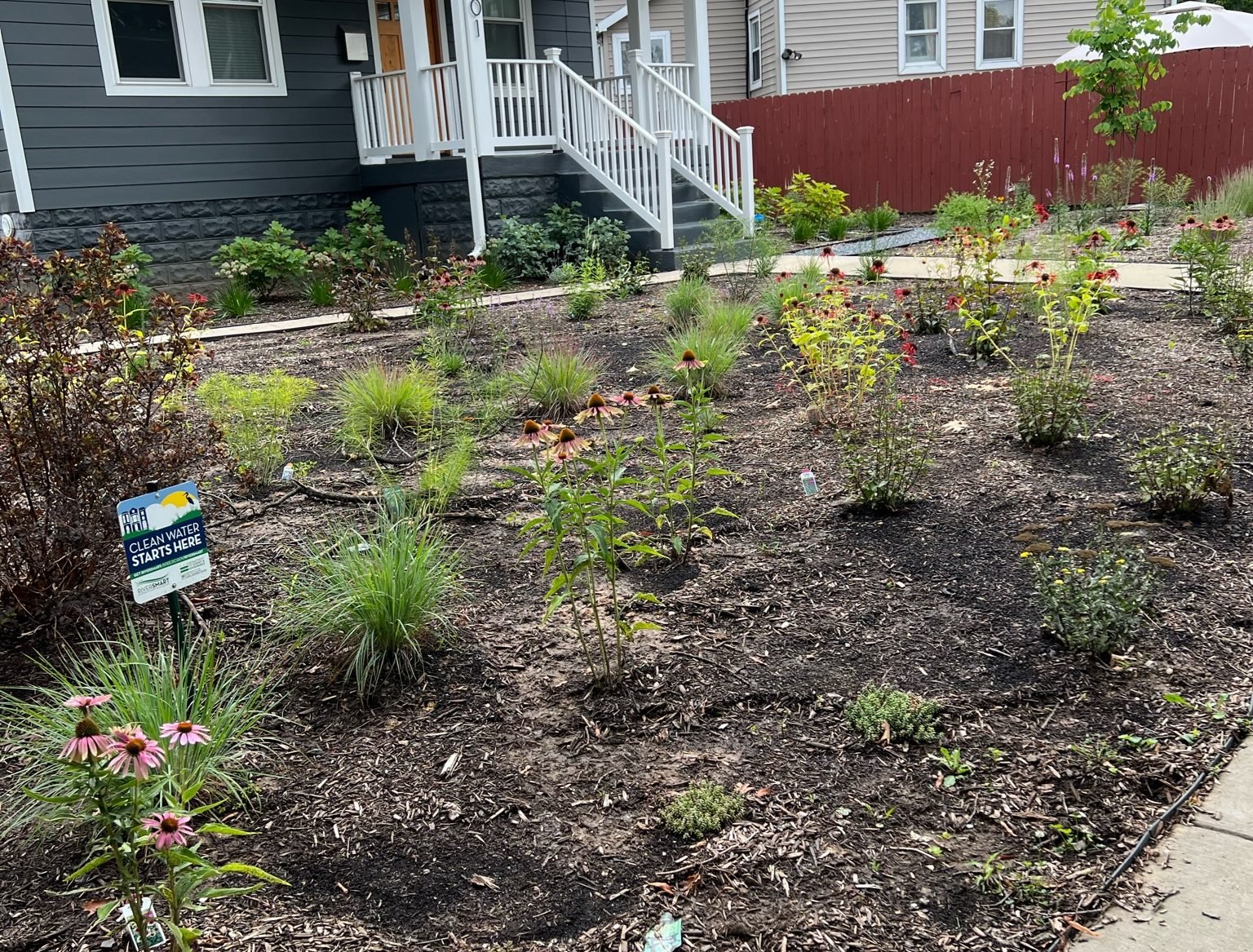
In addition to the features installed by the RiverSmart program, the couple also got their hands in the dirt. Despite having limited gardening experience, they spent a handful of weekends, spaced over the course of two years, planting additional native plants they purchased (many from Merrifield Garden Center). Altogether, Hughes estimates they bought an additional $10,000 worth of plants and soil—expensive, yes, but much cheaper than the $20,000 average quotes they got from other landscaping companies, he says.
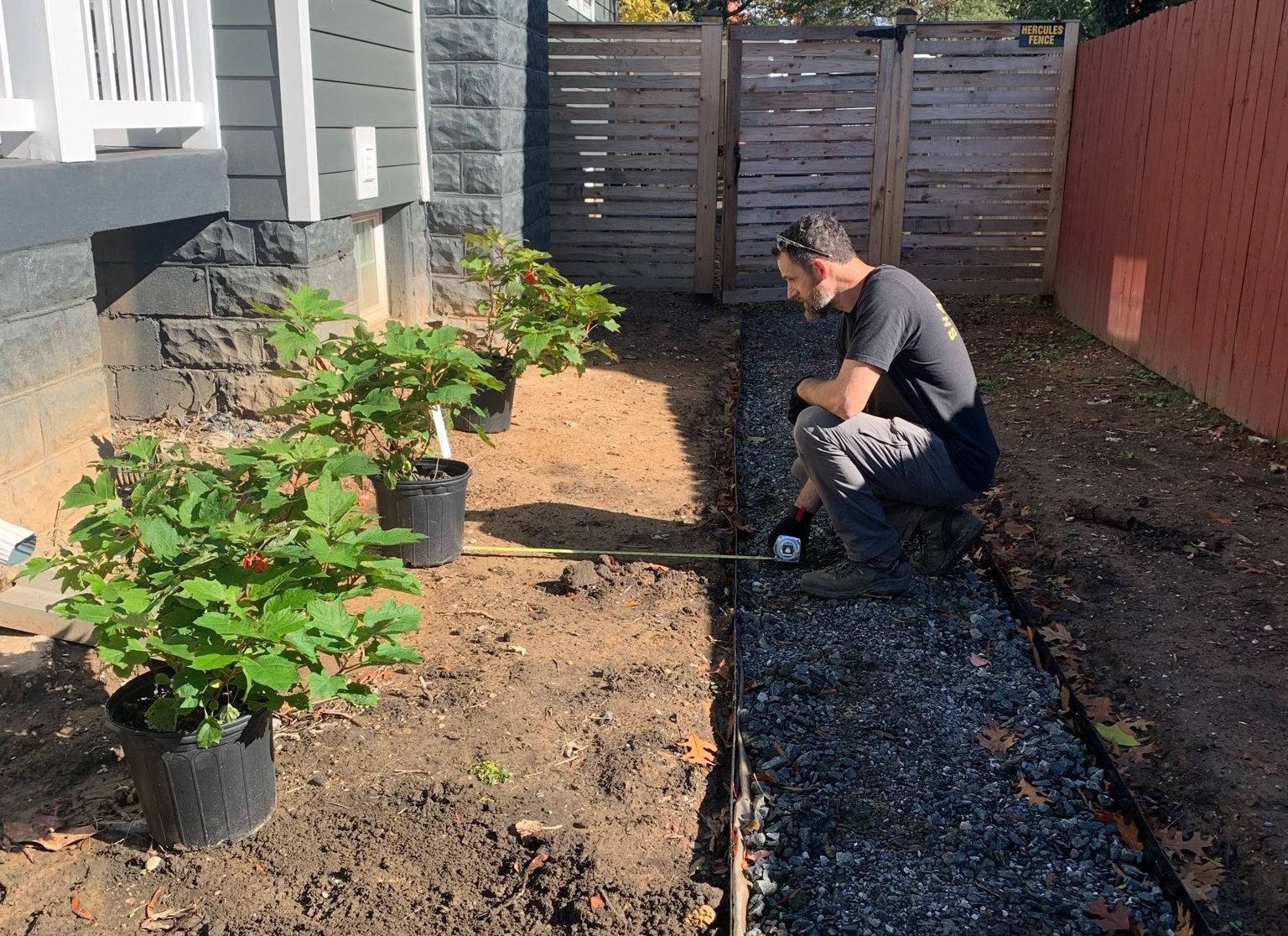
Now, four years after they began the project, the couple has been enjoying the bounty of their work.
“Even though it’s taken four years to really come to life, I’m proud of seeing it through,” says Albertini. “It felt really overwhelming at first. I was like, ‘Oh my gosh, everything is ugly and horrible and is going to cost us a million dollars to fix.'”
Today, their yard is filled with shrubs such as spicebush, oak leaf hydrangea, and Virginia sweet spire; perennials such as black-eyed susan, ironweed, and yarrow; and ground cover such as moss phlox, catmint, and golden ragwort.
“It’s really energizing to look at the variety of plants,” says Albertini. “There are always butterflies and bees around.”
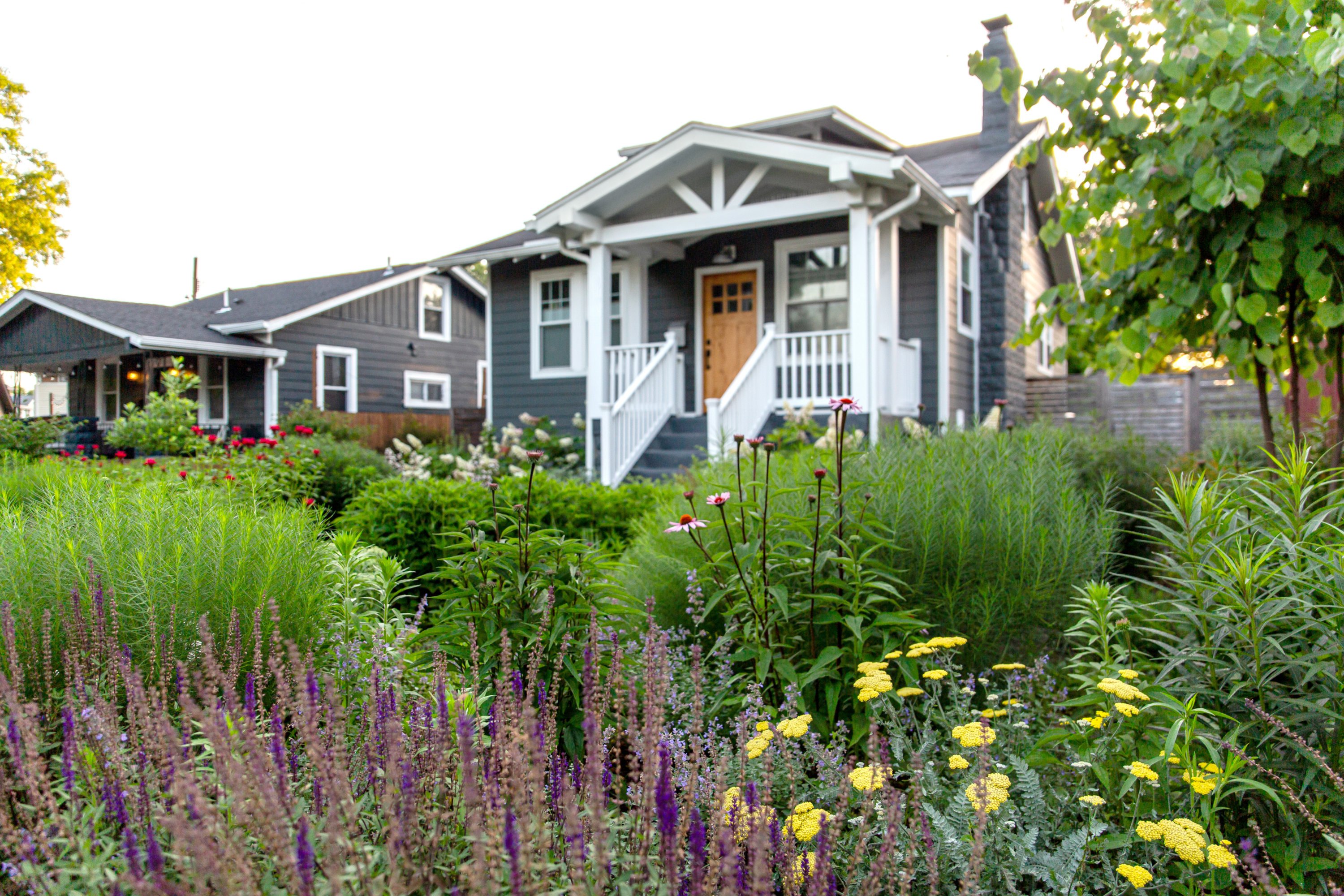
Hughes adds that Connell, the designer, selected plants with rotating seasons. “It’s always evolving and it’s fun to drive by and be like, ‘Oh, look what came out!’” he says.
The couple notes they’ve even had some neighbors stop by to ask about the yard’s transformation. “They’ll say, ‘Wow, your yard is so interesting—how did you do that?’” says Albertini. “We like to think we are helping normalize this type of yard.”
